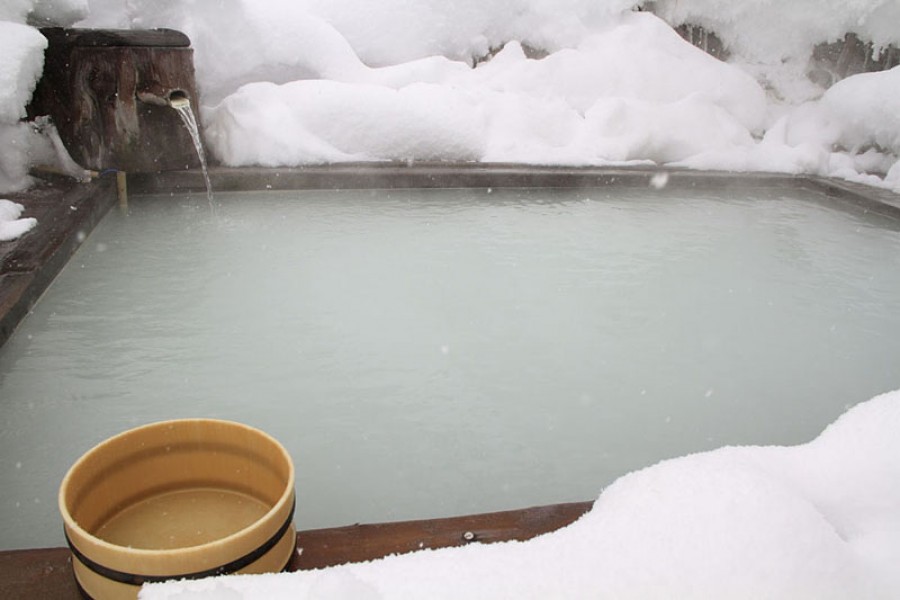
Noji Onsen
Noji Onsen is a beautifully scenic onsen resort in Adatara mountains. It is especially breathtaking when the outdoor baths, and their cloudy white waters, are surrounded by stunning snowy landscapes in winter.
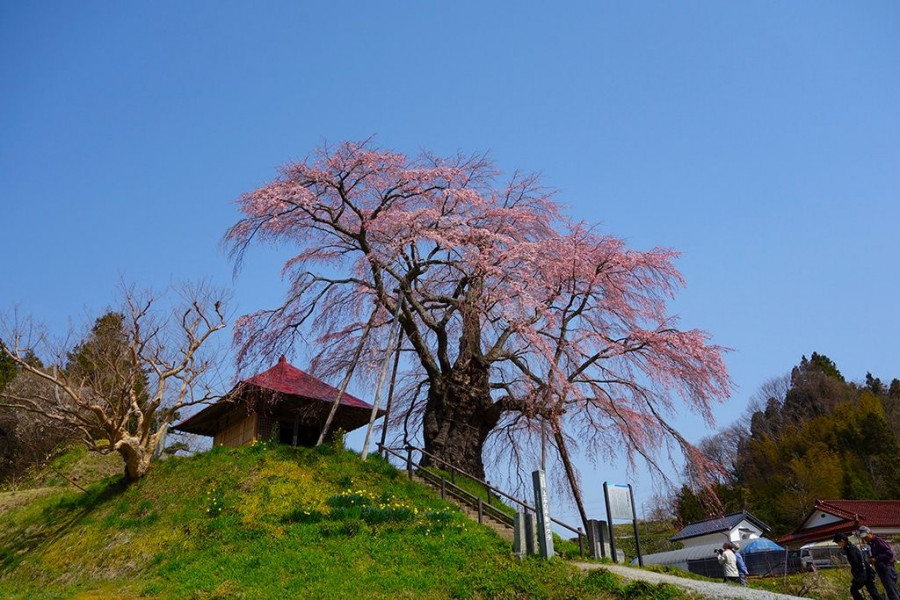
This tree is located on the grounds of a temple dedicated to the Buddhist deity Acala (known as Fudo Myoo in Japan), and is thus known locally as the Fudo Cherry Blossoms. The tree is about 350 years old and is considered to be a descendant of the Miharu Takizakura, a famous cherry tree located in nearby Miharu Town.
Photography tip: Angle your camera so you capture both the cherry blossoms and the yellow canola flowers.
| Website | https://www.kanko-koriyama.gr.jp/tourism/detail5-1-418.html(Automated translation available) |
|---|---|
| Contact | Koriyama City Tourism Association (+81) 24‐924-2621 |
| Best Season |
|
| Parking | Available |
| Entrance Fee | Free |
| Related info | Best viewing period: From mid-April to late April |
| Access | Tate, Ageishi, Nakata-machi, Koriyama City, Fukushima Prefecture. View directions |
|---|---|
| Getting there | By Car: 25 min from Koriyama-Higashi I.C. exit off the Ban-etsu Expressway. By Train: From Koriyama Station (JR Tohoku Main Line / Shinkansen), take the bus bound for Yanagibashi or Ono to Takakuradate bus stop, and then walk for 30 min. |

Noji Onsen is a beautifully scenic onsen resort in Adatara mountains. It is especially breathtaking when the outdoor baths, and their cloudy white waters, are surrounded by stunning snowy landscapes in winter.

At Marusei Orchard, you can enjoy seasonal fruit picking as well as beautiful rural views. You can even treat yourself to delicious sweet treats made using fresh fruit at their onsite cafe! (The cafe menu changes by season).Fruit-Picking Experience Info & BookingSee more information about fruit picking in Fukushima City here.
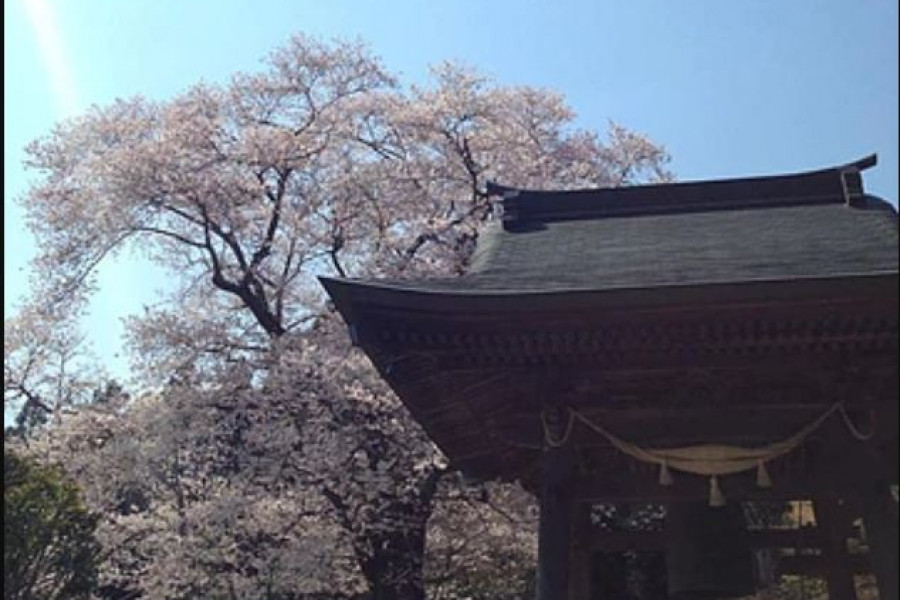
Ryusenji Temple is the perfect place to refresh the mind and body during your trip to Fukushima Prefecture. Originally built in 1320, the temple underwent many name changes until being called Ryusenji. The beautiful main hall has not changed for about 300 years after being reconstructed due to a fire in 1758. Nowadays, the temple offers many interesting events and vistas to visitors. There are many sights to experience at Ryusenji. Inside the main hall of the temple, you can see a cloth bag containing the temple’s treasures and a palanquin-shaped box hanging from the ceiling. This important Cultural Property also contains many wooden statues and make for an impressive time amongst history. If you would like a more personal experience at Ryusenji Temple, why not try the Zazen meditation experience offered by the temple’s monks? Zazen is a short zen meditation experience and is offered at Ryusenji Temple on the first Sunday of every month, as well as the first and third Wednesdays of every month. Sit in silence and stillness for 20 minutes while you empty yourself of worldly thoughts and desires. It’s best to contact ahead of time to make reservations if you’d like to experience their Zazen, temple yoga, or calligraphy. The nature surrounding Ryusenji Temple and the calming halls of the temple will welcome you and give you peace of mind and spirit. So shed the busy angst of your life and let Ryusenji Temple offer you a serene experience.
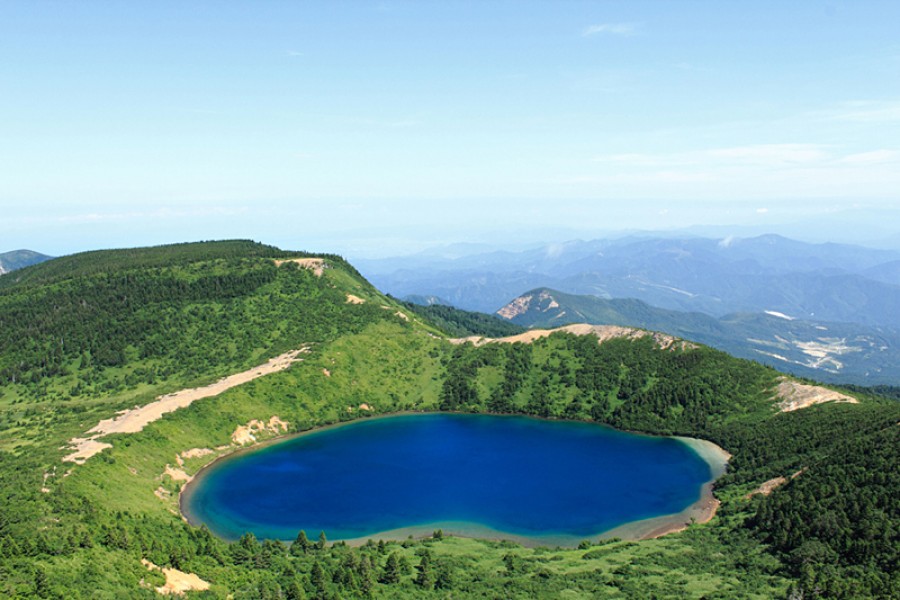
Majyo-no-hitomi, or The Witches’ Eye Lake, is a volcanic lake that was formed during a volcanic eruption many years ago. Unique minerals in the water cause the lake to appear different colors, giving the lake it’s official name of Goshiki-numa (Five Colored Lake), but most often it is a bright blue. The nickname of “Witches Eye” comes from the unique appearance of the lake that is visible in late spring when the snow melts enough so that only a white ring remains around the lake to form the white of what appears to be an enormous single eye. This lake viewpoint can be reached by an intermediate hike that begins at the Jododaira Visitors Center, stop by for a map and safety information before hiking.
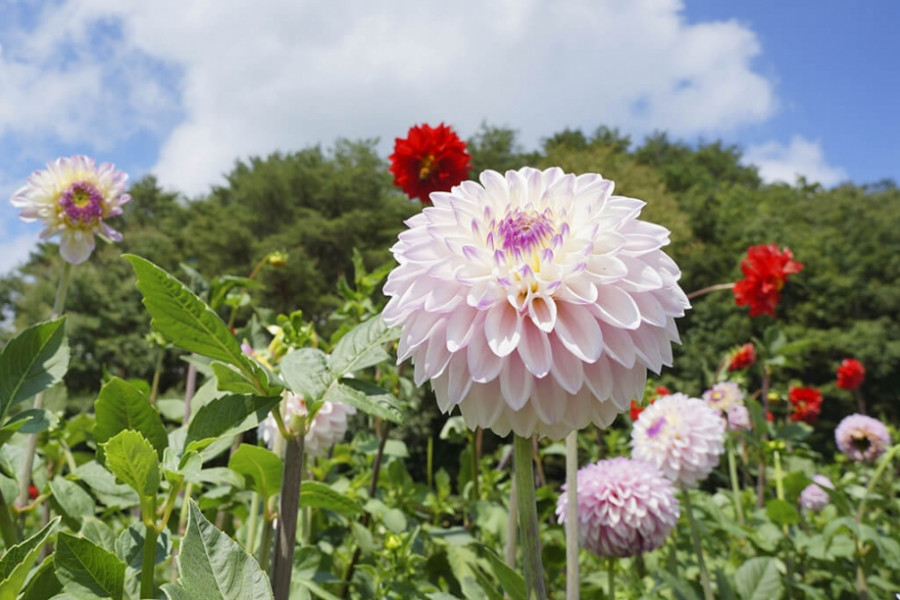
Yuyu Land Hanawa Dahlia Park is located within Yuyu Land Hanawa hot spring and accommodation facility. 300 kinds of 5000 dahlias bloom in approximately 7000 ㎡ site from summer to autumn at the Dahlia Park. Hanawa Town is home to 18 small dahlia gardens including 4 located in elementary and junior high schools. The best time to visit in order to see these flowers is between August and October. An annual dahlia festival is held in Hanawa Town every year to celebrate these vibrant flowers.
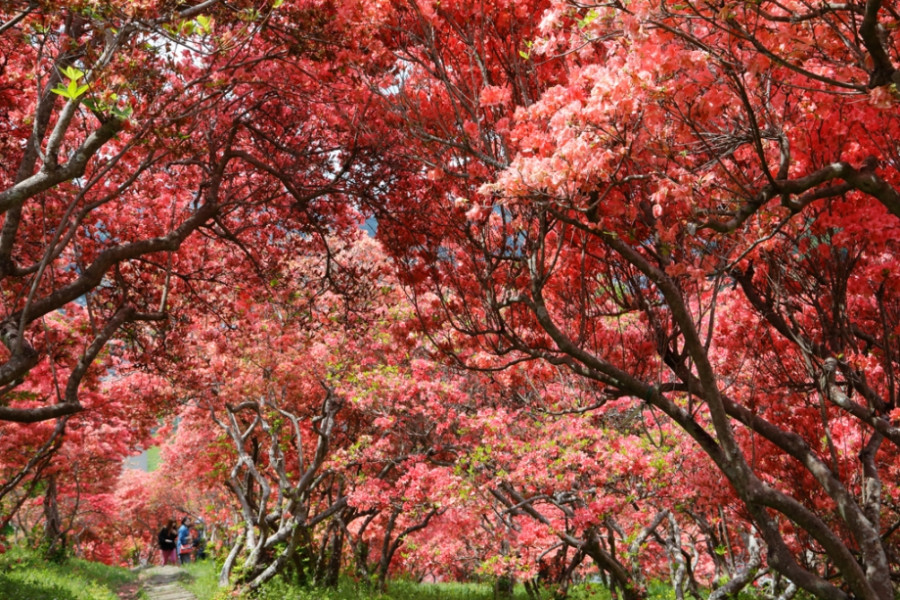
The famous Okukuji Prefectural Nature Park in Ibaraki Prefecture designated Furoyama Park as a top Green Spot of Fukushima. Furoyama Park is famous for its yama-tsutsuji (mountain rhododendron), which come into bloom from late April through to early May. There are around 3,000 rhododendron plants which cover the park in deep shades of red. Climb halfway up the hill to gain a great view of the town.
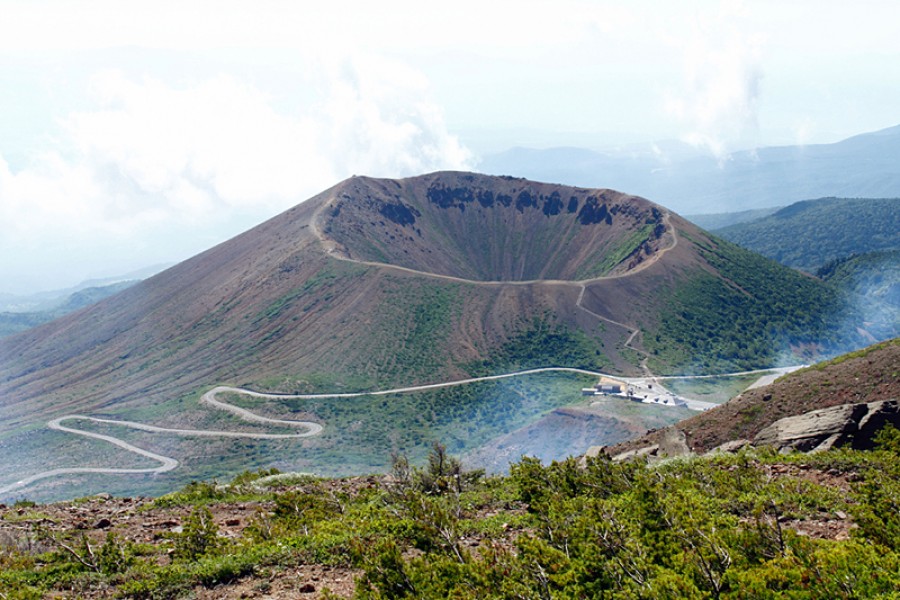
Every year in spring, as the snow melts away, it leaves behind the shape of a giant white rabbit on the side of Mt. Azuma-Kofuji. This is called the “seeding rabbit”, and it signals to the people of Fukushima that the farming season has come.From April to November each year, you can experience the beauty of the awe-inspiring natural landscape of Mt. Azuma-Kofuji.Mt. Azuma-Kofuji is an active volcano with an appealing symmetry to it and a soft conical shape; because of these classic features, it was named Kofuji ('little Fuji'), after the iconic Japanese mountain.Thanks to its volcanic ground, the area has given birth to many nearby onsen areas perfect for relaxing, such as Tsuchiyu Onsen and Takayu Onsen.Mt. Azuma-Kofuji is a great destination for those who decide to drive through the area as the Bandai-Azuma Skyline happens to pass just below the crater of Mt. Azuma-Kofuji. Along the roadway is the Jododaira Visitor Center, which offers visitors a place to park, rest up, get a snack, and maybe even buy souvenirs. It is the perfect spot to take a break and explore one of the many short hiking routes to stretch out your muscles after a long car ride. From there, it is just a short hike up to the crater, and there are plenty of other great trails. Circle the crater of Mt. Azuma-Kofuji on a relaxed 40-minute walk and—if you are lucky—enjoy gorgeous views of Fukushima City, Mt. Bandai, and the Urabandai area. But do watch your step as the ground can be uneven and even slippery on grey days. The mountain is open from spring to autumn every year.
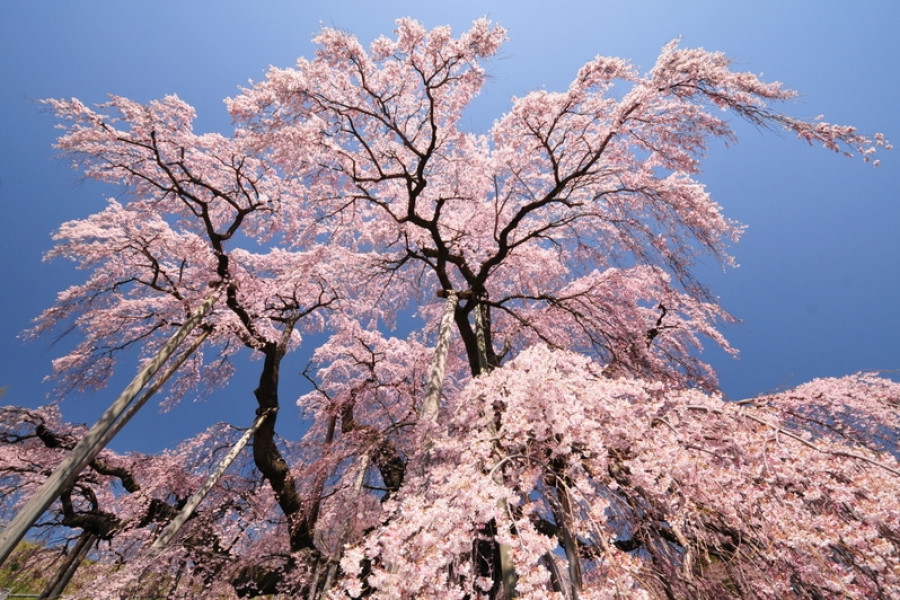
Miharu is a small town in central Fukushima Prefecture. The town’s name means “three springs” and it is easy to see how it got such a name. With cherry, plum, and peach trees blossoming in spectacular displays every spring, it is almost as if spring has tripled! But the most famous of the trees in Miharu is the Miharu Takizakura tree, which is a nationally recognized Natural Monument.Over ten centuries old, the beautiful Miharu Takizakura is a flowering cherry tree that spreads out in all directions and makes for a breathtaking vista. The cascading blankets of blossoms are how this tree got the name takizakura, or “waterfall cherry tree.” It is even one of the “three great cherry trees” of Japan (along with Usuzumizakura in Gifu and the Jindaizakura in Yamanashi Prefecture).Miharu Takizakura sits in a sakura hollow in order to protect it from the elements while providing excellent drainage. The heavy boughs of the tree are supported by wooden beams and lend to its elegant form. The Miharu Takizakura begins blooming from mid-April. During the day the sight is whimsical, but visit in the evening and you’ll be treated to an almost haunting beauty as the tree is illuminated.Aside from this huge cherry tree (over 12 meters tall and 18 to 22 meters in spread), the area is also blessed with various wildflowers, including cherry and rapeseed flowers. But, of course, the Miharu Takizakura is what the annual 200,000 visitors are there to see. The view from the base of the sakura is considered to be the most beautiful and the Miharu Takizakura often ranks as the best sakura tree in all of Japan.